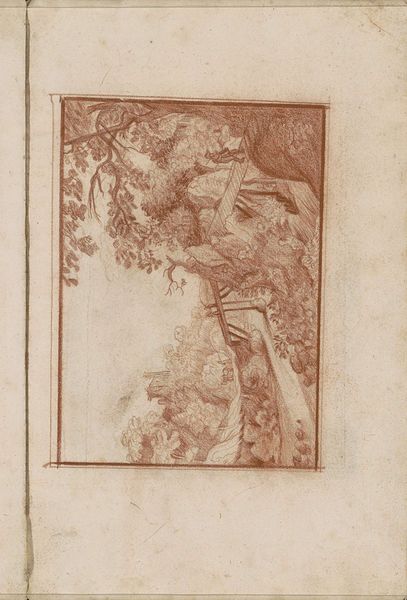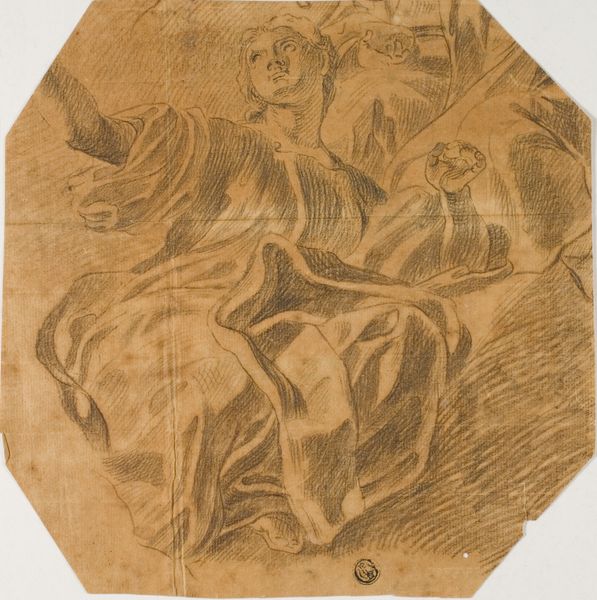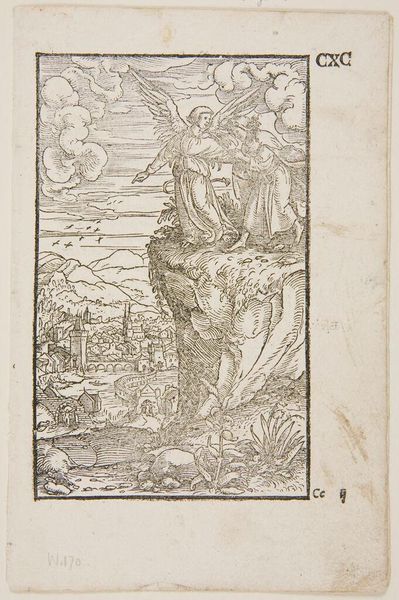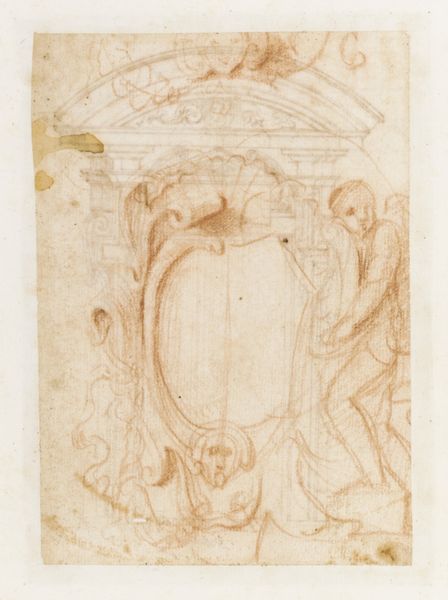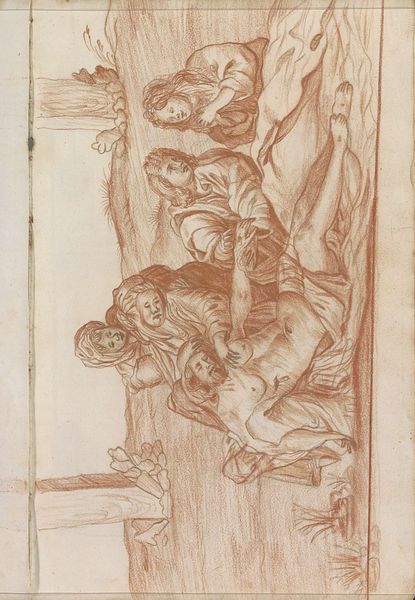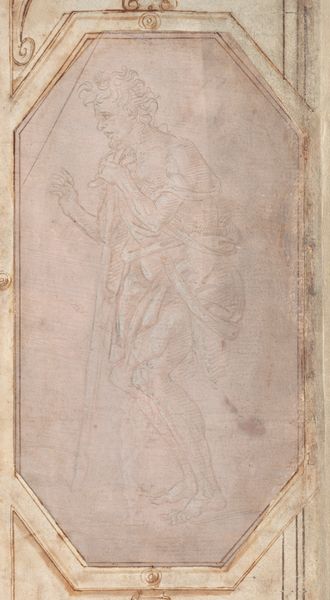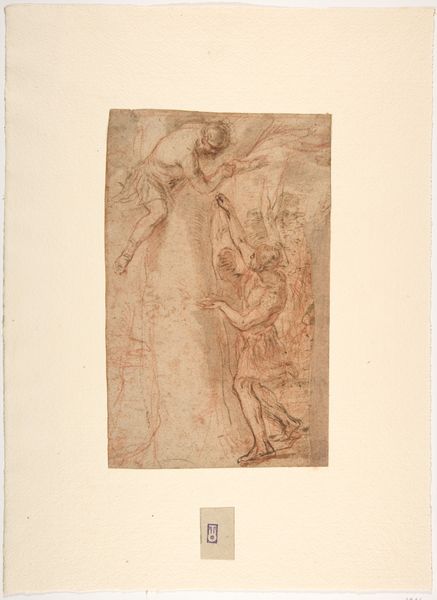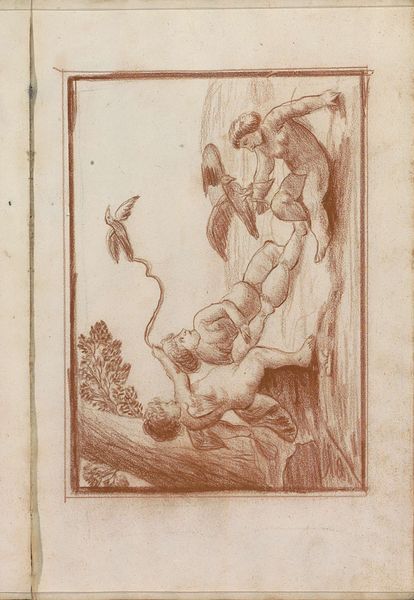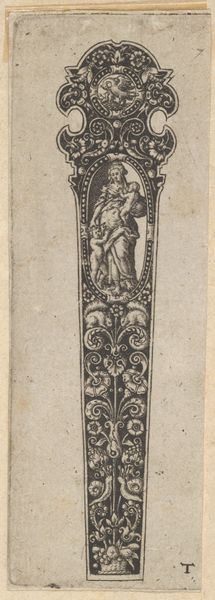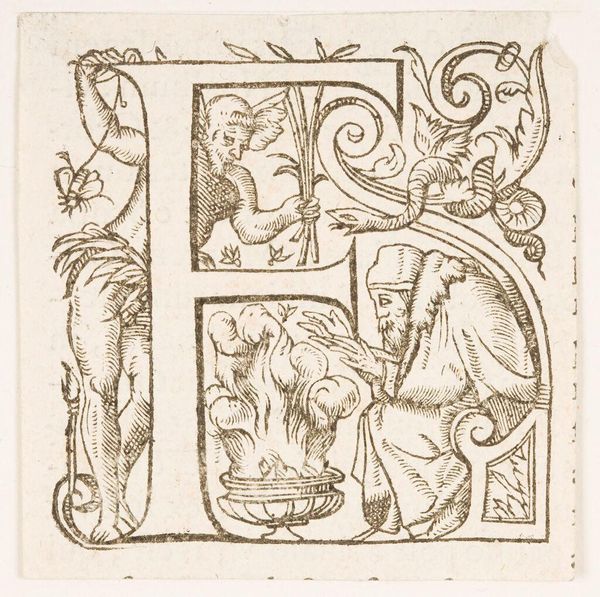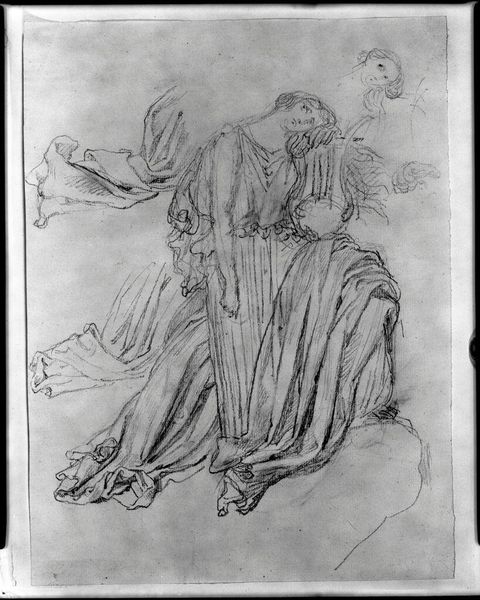
drawing, coloured-pencil, pencil
#
drawing
#
coloured-pencil
#
baroque
#
pencil sketch
#
landscape
#
figuration
#
coloured pencil
#
pencil
#
genre-painting
Copyright: Rijks Museum: Open Domain
Curator: This delightful sketch from 1696 is by Hendrick van Beaumont. It’s called “Op een fluit spelende putto bij een rustende herder,” which translates to "A putto playing a flute near a resting shepherd." Editor: My first thought is of sepia photographs and faded memories. It possesses a delicacy; you can almost feel the artist's hand moving lightly across the paper. The use of pencil really accentuates this. Curator: Indeed, the medium is a combination of pencil and coloured pencil. What’s fascinating is how van Beaumont employs these humble materials to evoke a classical pastoral scene. We have the shepherd, drowsing beneath a tree, while a putto—a cherubic figure often found in Renaissance and Baroque art—plays music. Editor: And note the material limitations here. This isn't oil paint with layers of built up pigments but quickly and economically rendered marks on paper. The material reality influences our understanding, framing it as a preparatory study, a fleeting thought rather than a grand statement. It is also an intimate and personal piece because of that material reality. Curator: Precisely. Pencils allow for that immediate expression, capturing a transient moment. And that oval frame the artist sketched around the composition… it feels as if we’re peeking through a looking glass into another time. Putti, in art history, often represented divine love, artistic inspiration, or the fleeting nature of earthly pleasures. This putto’s music underscores the pastoral idyll, the simple joys of the shepherd’s life. Editor: I'm curious about how landscape is employed as a mere stage, a setting for this play. Beaumont highlights the figure while downplaying any social context implied in depicting working shepherds within larger production practices or environments of exchange and use. I feel a sense of a retreat from material labor. Curator: An excellent observation. Van Beaumont seems to emphasize an allegorical dimension over socio-economic commentary. He presents an idealized vision rooted in classical themes, almost divorced from the realities of daily toil. The shepherd becomes less of a worker and more of a symbol of peace and simplicity. Editor: Examining its material properties alongside this symbolic richness brings us closer to decoding this Baroque world. Curator: Agreed. Thank you for drawing that to my attention.
Comments
No comments
Be the first to comment and join the conversation on the ultimate creative platform.
